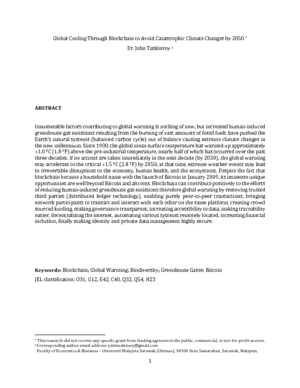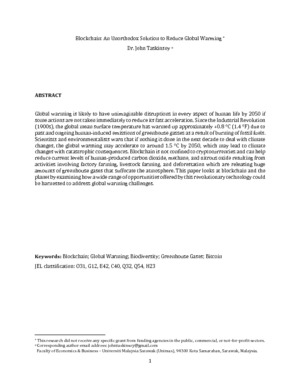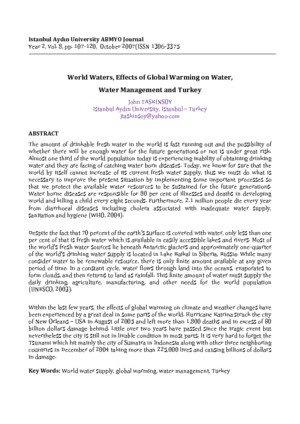- Suggested keywords :
- speech(1)
- finding(1)
- same(1)
- Scientists(17)
- stress(6)
List of Categories and SubCategories
Change Your Picture

Global Cooling Through Blockchain To Avoid Catastrophic Climate Changes By 2050
JOHN TASKINSOY
VIEWS
596
INFO
more

0
0
- Category : Environmental Studies
- Size : 1000066
- By : JOHN TASKINSOY



Using Your Google Account
Google Login/Sign up
OR
Recover Your Password
Abstract
Innumerable factors contributing to global warming is nothing of new, but increased human-induced greenhouse gas emissions resulting from the burning of vast amounts of fossil fuels have pushed the Earth’s natural systems (balanced carbon cycle) out of balance causing extreme climate changes in the new millennium. Since 1900, the global mean surface temperature has warmed up approximately +1.0 °C (1.8 °F) above the pre-industrial temperature, nearly half of which has occurred over the past three decades. If no actions are taken immediately in the next decade (by 2030), the global warming may accelerate to the critical +1.5 °C (2.8 °F) by 2050; at that time, extreme weather events may lead to irreversible disruptions to the economy, human health, and the ecosystems. Despite the fact that blockchain became a household name with the launch of Bitcoin in January 2009, its immense unique opportunities are well beyond Bitcoin and altcoins. Blockchain can contribute positively to the efforts of reducing human-induced greenhouse gas emissions therefore global warming by removing trusted third parties (distributed ledger technology), enabling purely peer-to-peer transactions, bringing network participants to transact and interact with each other on the same platform, creating crowd sourced funding, making governance transparent, increasing accessibility to data, making traceability easier, decentralizing the internet, automating various systems remotely located, increasing financial inclusion, finally making identity and private data management highly secure.
Recommended Papers



